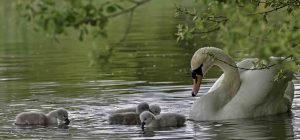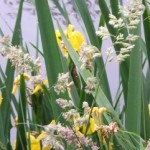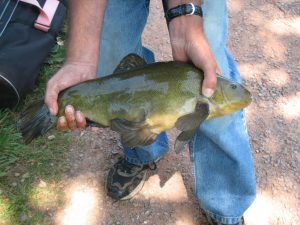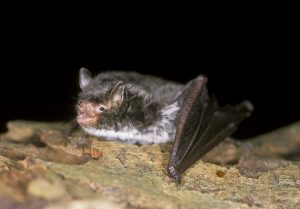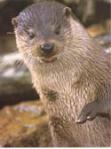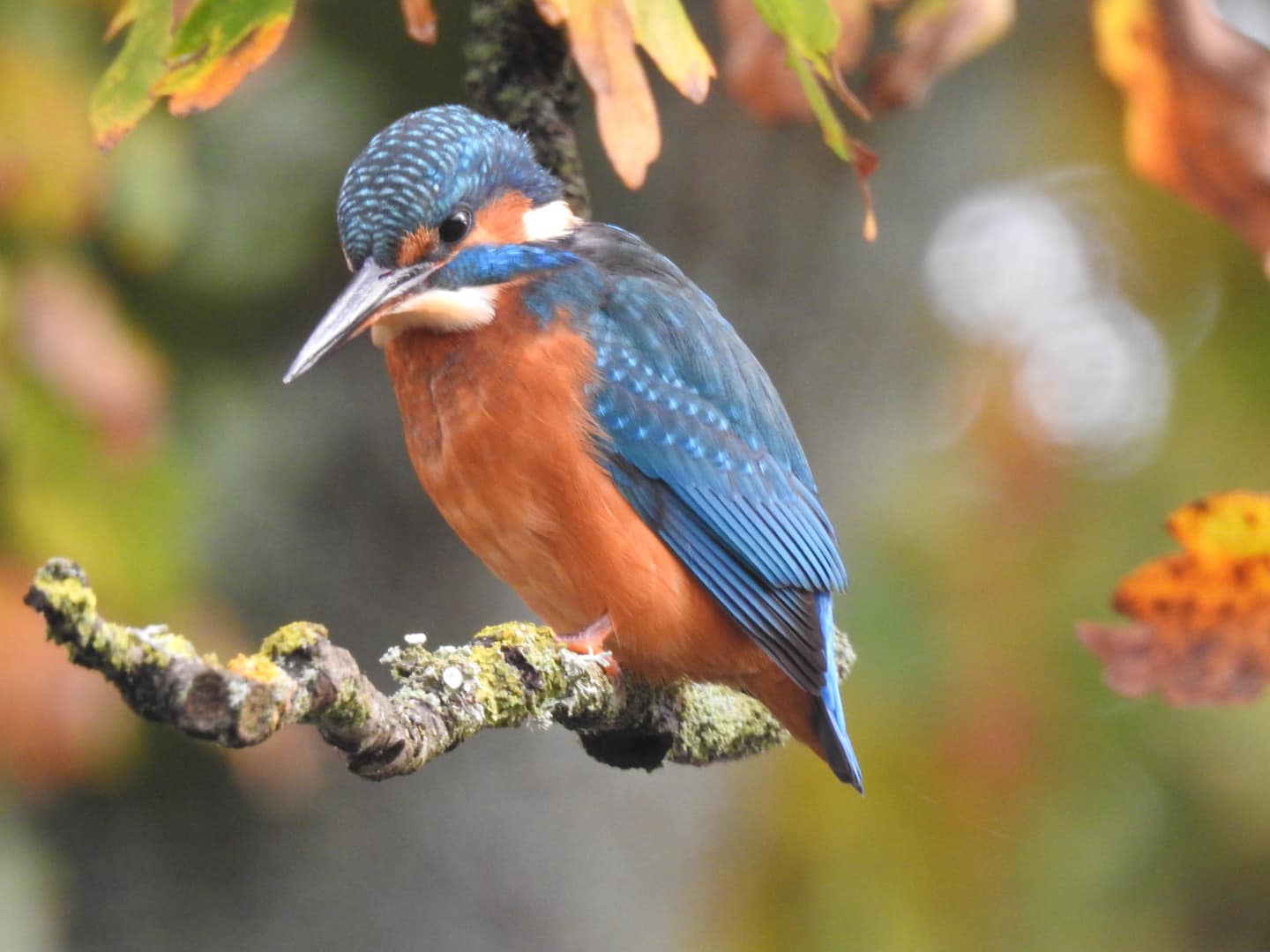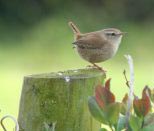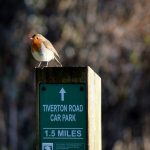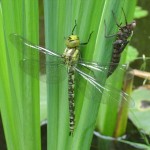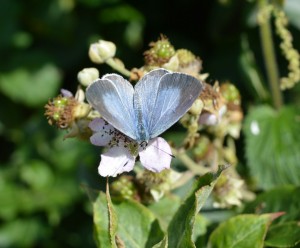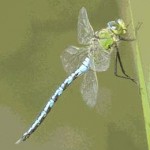The Grand Western Canal is an attractive stretch of isolated canal, winding its way through the soft rural landscape of Mid Devon, enticing an abundance of local wildlife. Although the canal is wholly man-made, its plant and animal communities are mostly natural, having colonised the site as it has matured and suitable habitats have developed. In recognition was declared a Local Nature Reserve in 2005.
-
Plants
The canal is a mass of colour in spring and summer with an abundance of wild flowers. Look out for the Early-purple and Common-spotted Orchids on cuttings and embankments and the vibrant yellow Flag Iris emerging along the waters edge.
Unlike many other canals, the bankside vegetation at the Grand Western Canal is allowed to grow throughout the summer providing a profusion of wildflowers and the insects which feed on and around them.
Hedgerows run beside the towpath throughout most of the length of the Canal, providing ideal habitats for many birds, mammals, plants and insects. These are ‘laid’ by traditional methods periodically to promote their vigour. You may see examples of recently laid hedges where the stems are partially cut and bent over, winding between poles to create a living fence.
Some fantastic examples of mature Oaks may be found within the hedgerow and new ‘standard’ trees are left to grow on at intervals, when the hedges are laid.
The hedgerows and bankside vegetation provide food, shelter and a safe corridor for movement between habitats for bird species including Grey Wagtail, Reed Warbler and Sedge Warbler, and small mammals such as Bank Voles and Shrews. One of the most exciting Mammals to be found along the canal is the Otter. Evidence of their activity is being recorded regularly in the Country Park.
-
Fish
The canal is home to a wide variety of fish including Tench, Perch, Bream, Rudd, Roach, Carp and Pike. An excellent mixed fishery with above average stocking levels, means that the Canal presents a good challenge to anglers.
The following document provides useful information for anglers and those who are interested in the fish species in the canal. Each page gives a description and average adult size of the fish and some angling information.
-
Mammals
Most mammals are shy creatures but if you look carefully, particularly near dusk or dawn, you may be able to spot Roe Deer, Foxes or Badgers in or around the Country Park.
A number of bat species use the Canal for feeding and as a safe corridor to travel between roosts and feeding areas. The Canal Ranger Service lead bat walks each year when you will be able to see, hear and learn more about the bats found in Country Park.
One of the most elusive mammals to be found along the Canal is the Otter. In recent years they have made a strong recovery in the West country and evidence of their activity is being recorded regularly in the Country Park.
A sadder story is that of the Water Vole, which once thrived on the Grand Western Canal. The introduction of American Mink in the last century has led to a dramatic decline in this charismatic species throughout England, and there is currently only thought to be one small re-introduced population in the whole of Devon and Cornwall. However, Water Voles are still present in the Somerset Levels and Dorset and work is underway to encourage them back to Devon. The Canal may be able to play a prominent role in this initiative in the future.
-
Birds
Waterfowl are found along most stretches – Moorhens, Mute Swans and Mallards are a common sight. Other bird species found along the canal include the Kingfisher, which is regularly seen fishing in the water. The Canal plays host to a range of bird species. Kingfishers are commonly seen fishing along the Canal between late summer and early spring. These birds are actually quite common along the canal, but very hard to spot. The best time to see them is when they fly just above the water level flashing blue against the sunlight.
The hedgerows, trees and wildflower-rich canal banks provide food and shelter for many bird species. Those particularly associated with the watery margins include Grey Wagtail, Reed Bunting, Reed Warbler and Sedge Warbler. Rarer sightings within the Country Park include Water Rail, Little Grebe (Dabchick) and Snipe.
The canal provides food, shelter and nesting sites for a large variety of birds, ranging from the conspicuous Mute Swans and Mallards, to the secretive warblers that hide away in the reeds and other vegetation. Although not always possible to see all the species present along the canal, most of them can be heard very distinctly. Catch the dawn chorus during the spring months to enjoy a medley of beautiful birdsong.
Some less-common species of bird have been recorded in the Country Park in recent years. The secretive Water Rail has been sighted on occasions and the Little Grebe is often present on the waterway in the winter months. In addition to the waterfowl numerous woodland species have been seen including all three species of Woodpecker. The evidence of a variety of bird species is a good indicator that the canal is a rich diverse mix of habitats.
Many common species can also be found along the canal, gathering at the picnic sites to be fed and flitting in amongst the trees on the canal banks. They include Robins, Chaffinches, Greenfinches, Blackbirds, Song Thrushes and Blue Tits.
A number of dedicated volunteers have been collecting data and carrying out surveys on the bird species found along the canal.
-
Insects
The waterway is teeming with freshwater invertebrates such as Water Boatmen and Damselfly larvae. The canal is also a hot spot for Insects, such as butterflies and dragonflies during spring, summer and early autumn, feasting on nectar and smaller insects sheltering in the vegetation. A notable new dragonfly record for the canal was made a few years ago year with a small population of Scarce Chasers being confirmed between Ayshford Bridge and Ebear Bridge. Initially spotted by Rangers operating the weed-cutting boat, this was the first record of this dragonfly breeding in Devon.
With the wonderful array of wild flowers along the towpath during the summer months there is an abundance of insect life.
The Canal is a hot spot for butterflies and dragonflies in spring, summer and early autumn, feasting on nectar and smaller insects sheltering in the vegetation. The section of canal between Sampford Peverell and Westleigh is particularly rich in dragonflies and an information panel telling you all you need to know about where, when and what to look for is located near Ebear Bridge.
Butterflies
Common species found along the canal include the colourful Peacock and Red Admiral, and the more delicate Common Blue, Comma and Gatekeeper. It is also worth looking out for caterpillars in amongst the grasses and nettles on the towpath, as they will be the next generation of butterflies to admire on a walk.
Dragonflies and damselflies
A variety of dragonfly and damselfly species are found throughout the country park. The Common Blue Damselfly is very easy to spot hovering in amongst the shallow water vegetation, and the large impressive Emperor Dragonfly can be seen flying along the hedgerows looking for small insects to feed on. They seem to be very inquisitive creatures and have been known to fly very close to people, close enough so you can hear their wings flapping.
The insect life under the water is just as busy and fascinating as above. Dragonflies start their lives under the water. The larvae prey on other freshwater insects, and are quite aggressive predators. Water boatmen are another species found in the canal. They are very noticeable by their very long back legs, which they use as oars to move around. Another indicative feature of this species is that they swim on their backs.
The following dragonfly and damselfly species have been recorded within the country park.
Species Flight period Where to look Common Blue Damselfly
Enallagma cythathigerumLate May – Early September Widespread Blue-tailed Damselfly
Ishnura elegansMid May – Early August Widespread Azure Damselfly
Coenagrion puellaLate May – Mid August Mainly between Sampford Peverell and Ebear Red-eyed Damselfly
Erythromma najasMid May – Early September Mainly around Greenway Bridge and East Manley Large Red Damselfly
Pyrrhosoma nymphulaLate May – Mid August Mainly between Sampford Peverell and Ebear Banded Demoiselle
Calopteryx splendensJune – July Widespread Beautiful Demoiselle
Calopteryx virgoLate May – Late August Widespread Hairy Dragonfly
Brochytron nymphulaMid May – End June Uncommon Migrant Hawker
Aeshna mixtaMid August – Mid October Widespread Southern Hawker
Aeshna cyaneaJuly – Early October Widespread Emperor Dragonfly
Anax imperatorMid June – Early August Widespread Black-tailed Skimmer
Orthethrum CancellatumMid June – Mid August Widespread Broad bodied Chaser
Libellula DepressaLate May – Early August Widespread Scarce Chaser
Libellula FulvaLate May – Early July Mainly between Ayshford Bridge to Ebear Bridge Common Darter
Sympetrum StriolatumLate June – Mid October Widespread especially between Waytown Tunnel and Lowdwells For more information about dragonflies and damselflies, please visit the British Dragonfly Society website.
Wildlife recording
The Rangers – with the help of a few dedicated volunteers – participate in survey work and the collation of casual records throughout the year. We have good records for the birds, butterflies and dragonflies, and much work has been done on surveying aquatic and bankside plants. The Ranger Service would be interested to know about any sightings of rare or notable wildlife along the Canal. Please contact us with your findings on 01884 254072 or at gwcanal@devon.gov.uk.
For more information on wildlife found in Mid Devon you can visit the website of the Mid Devon Natural History Society.
Privacy policy for Grand Western Canal Country Park customers.
